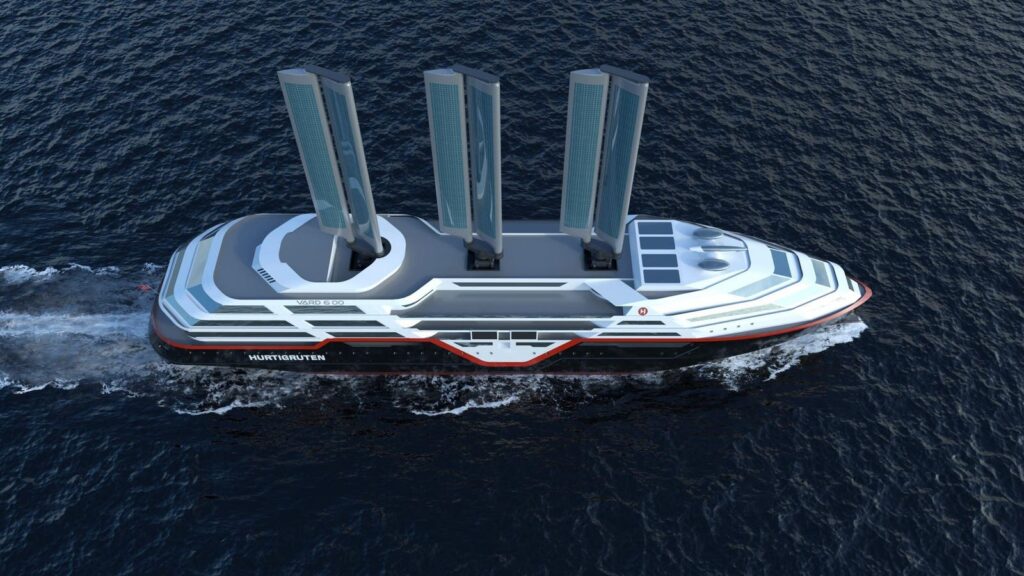
Shipping Goes Back to the Future – With Sails
As we gaze into the crystal ball of a sustainable future, it appears that innovation is about to rewrite history once again. A century-old practice has been resurrected in an era where climate change imperatives demand drastic measures. The return of sailing vessels? Not quite, but sails are indeed coming back on commercial ships to slash emissions.
Recently, Hurtigruten, the polar exploration company, revealed plans to construct a zero-emission cruise ship that will be propelled by wind power. A groundbreaking feat, this move could significantly impact the shipping industry’s carbon footprint. The International Maritime Organisation (IMO) has already adopted a strategy to reduce carbon emissions from international shipping by at least 40% by 2030.
As part of this effort, increasing the adoption of zero or near-zero emission technologies is crucial. In the next decade, such solutions should account for 10% of energy used in the industry. To put this into perspective, commercial shipping generates a staggering 940mn tonnes of CO2 annually. As the logistics sector scrambles to reduce emissions and their clients push for the same, wind wings and other eco-friendly measures cannot arrive soon enough.
One notable example is Maersk’s innovative approach. The Danish shipping giant has been operating its large container ship, Laura Maersk, entirely on green methanol since 2023 and has ordered eight more vessels with the same propulsion system. Furthermore, they are committed to introducing dual-fuel vessels with methanol and liquefied gas systems by 2028-2030. These advancements promise a significant reduction in greenhouse gas emissions of at least 65%, compared to conventional fossil fuels.
However, it’s essential to acknowledge that even the best alternatives have their limitations. For instance, Maersk’s reliance on methanol production raises concerns about its environmental impact. Biofuels, too, are susceptible to similar scrutiny.
In this era of rapid innovation, the incorporation of more hydrodynamic hulls, special coatings to minimize water friction, air lubrication systems that create a layer of bubbles to reduce drag and fuel use, and more efficient propellers or fully-electric propulsion vessels will contribute significantly to lower fuel consumption. It’s also worth noting that all new ships constructed in 2025 are expected to be 30% more energy-efficient than those built ten years prior, thanks to advancements in machinery and the adoption of smart technology.
In conclusion, wind-powered solutions like WindWings are poised to play a vital role in reducing emissions across the industry. As we strive for a cleaner future, it’s crucial that the shipping sector keeps pace with technological progress. The clock is ticking, but there’s still time to create meaningful change.
Source: www.forbes.com


